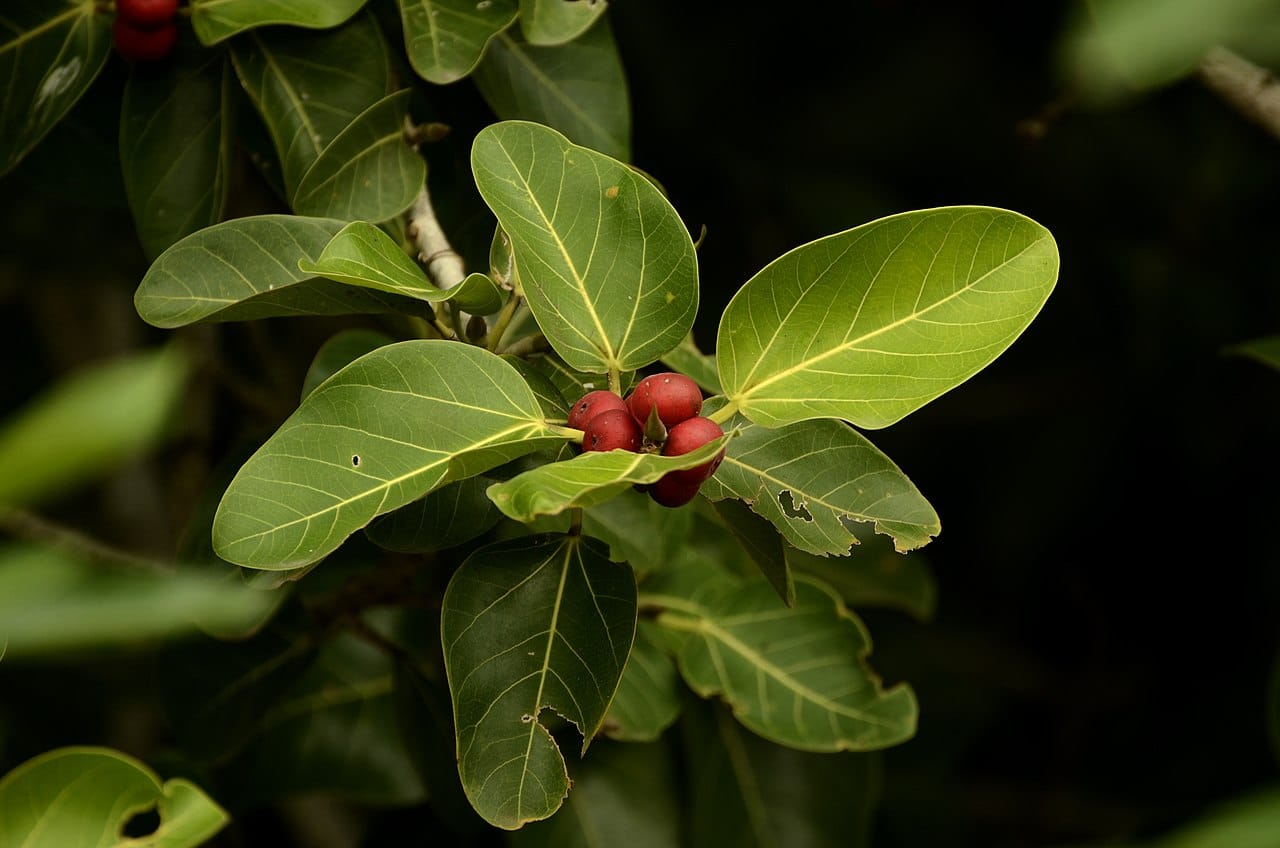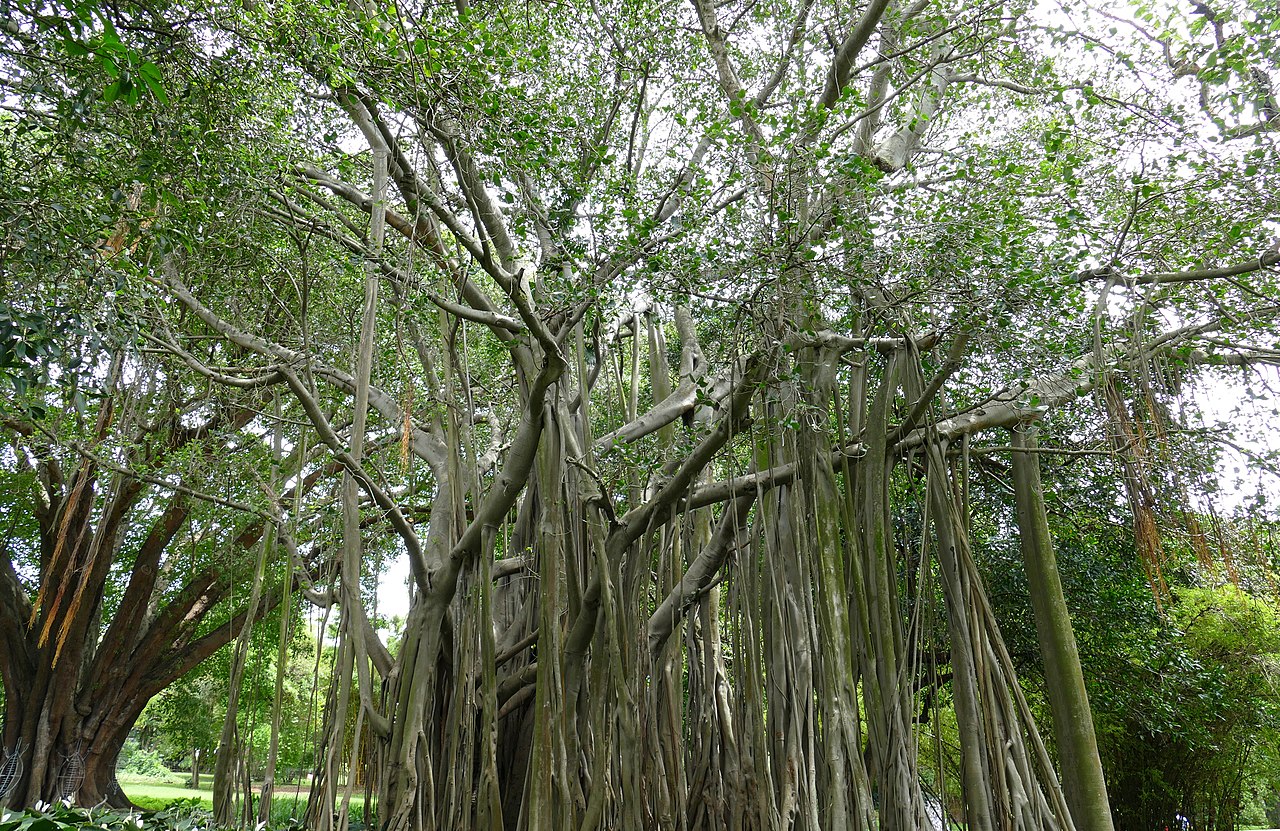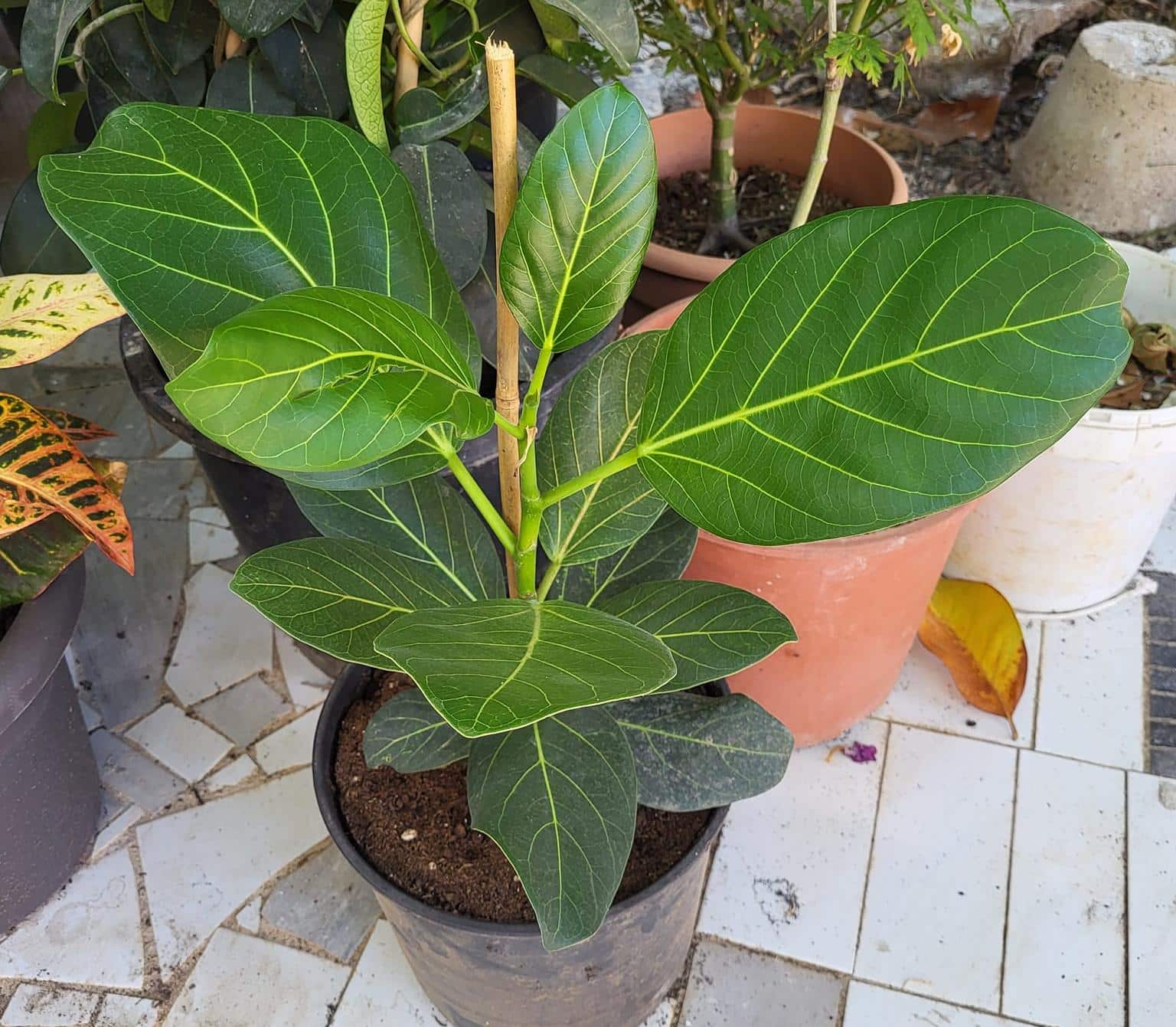
Image – Wikimedia/PJeganathan
The strangler fig is one of the largest trees in the world. It is not the highest, but it is the one that can occupy more meters, since if it grows near other trees, it uses their trunks as a support until they finally die. And of course, at a given moment, those trunks rot, but the Ficus does not fall, because it has had enough time to develop a root system that keeps it standing.
For this reason, we could also say that el ficus benghalensis It is a species with roots that are not only very long, but also strong.. Therefore, it is not a plant that can be grown in a small garden, but it can be interesting to keep it in a pot for a while (as long as it is transplanted periodically), or in a large plot.
Where does it originate from and what are its characteristics?

Image - Wikimedia / Bernard DUPONT
The strangler fig, or banyan tree as it is also called, It is an evergreen tree endemic to India and Sri Lanka.. It lives in tropical forests where the humidity of the air is high, so if it is grown in areas where it is low, it will be necessary to spray its leaves with water so that they do not dry out.
like many others Rubber plant that grow like trees usually begins its life as an epiphyte. And I say "usually" because this will only be the case if you can use something (other trees for example) as support; otherwise, it will develop a trunk, yes, but also aerial roots that will provide it with stability.
The leaves are simple, green in color except for the veins, which are lighter.. They measure about 30 centimeters long by about 10-15cm wide more or less. And the fruits are small figs, about 2cm in diameter, and red in color.
Why is it called a strangler fig?
Because when you use other trees as support, in the end they die since the roots of our protagonist steal their nutrients, and the leaves, by giving them shade, make it more and more difficult for them to carry out photosynthesis.
Sometimes it can be the case that the roots 'strangle' several trees, so over time the fig tree can occupy several hectares, which is why it could be said to be one of the largest plants in the world. In fact, in the Calcutta Botanical Garden there is one that occupies 12 square meters of surface area, and measures about 120 meters in diameter. It is calculated an age of more than 230 years.
So it might come as a surprise that someone would want to grow one in their garden, right? As well. I have one myself, in a pot. The first year I already saw something that surprised me a lot: I had it on artificial grass, and one autumn day when I decided it was time to bring it home so it wouldn't suffer from the cold, when I lifted it off the grass I immediately saw that it already had roots that were beginning to 'anchor' it.
And the point is that it had only been a few months since I had planted it in that pot (it went from being in one of 10cm in diameter, to another of about 25cm). But yeah, I took it home. Those roots that were already growing outside the pot hardly suffered, and the rest of the plant -which at that time was about 40cm tall excluding the pot- didn't even flinch.
What do you need to live?

Copy of my collection.
El ficus benghalensis it is a tree that can grow very, very large, so what it especially needs is space. Much space. It can be kept in a pot, as I will tell you later, but if we take into account the size it reaches, it is best to plant it in the ground as soon as possible.
But besides that, what you need is heat. Being of tropical origin, it is not possible to grow it outdoors -at least not throughout the year- in a place where there is frost, or where temperatures remain below 10ºC for several weeks in a row. In addition, you can not lack light either. If we want it to grow well, we will expose it to direct sun.
And last and not least, requires high air humidity. If you live on an island, for example, this will not be a problem, but to make sure it is best to check -with a domestic weather station- what percentage of humidity there is in your area. If it stays high, above 50%, then perfect; but if not, you will have to spray its leaves with water without lime daily.
What are the care it requires?
Let's talk now about how to care for a ficus benghalensis. From my own experience, I can tell you that it is not very complicated. But let's see it in detail:
- Location: It is best to keep it outdoors, since it is where it can be placed in a place exposed to direct sunlight. But of course, since it can't stand the cold, in autumn/winter it will have to be brought into the house if there are frosts in the area, in which case we will place it in the brightest room, and away from drafts.
- Pot or soil?: this will depend on the climatic conditions of the area and if we have a large garden or not. If the climate is tropical and we have a large plot, then it can be placed on the ground; Otherwise, it is best to have it in a pot, or pruning it.
- Earth: The land where it grows must be rich, and have good drainage. If it is going to be in a pot, you can put a universal culture substrate for plants, such as this.
- Irrigation: the banyan tree must be watered several times a week during the summer, but the rest of the year the watering must be spaced out to give the soil time to dry out a bit.
- Subscriber: Is it necessary to fertilize a tree that already grows fast and becomes very large? Well, it depends. If it is in the ground it is not necessary, but if you have it in a pot it will not hurt, since over time it will run out of nutrients. For this reason, I do recommend fertilizing it in spring and in summer with a universal fertilizer, such as this, following the directions on the package.
- Rusticity: it is sensitive to frost; on the other hand, it resists heat up to 45ºC if it has water at its disposal and whenever it is for a short time.
What did you think of the ficus benghalensis?